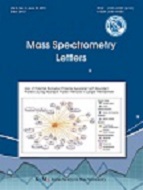
- P-ISSN 2233-4203
- E-ISSN 2093-8950

Methallylescaline, 2-(3,5-dimethoxy-4-[(2-methylprop-2-en-1-yl)oxy]phenyl)ethanamine, is a new psychoactive substance with potent agonist of 5-HT receptor, but there is little information on its pharmacological effect, metabolism, and tox- icity. It is necessary to characterize the metabolic profiling of methallylescaline in human hepatocytes using liquid chromatogra- phy-high resolution mass spectrometry. Methallylescaline was metabolized to three hydroxy-methallylescaline (M1-M3) and dihydroxy-methallylescaline (M4) via hydroxylation in human hepatocytes. CYP2D6, CYP2J2, CYP1A2, and CYP3A4 enzymes were responsible for the metabolism of methallylescaline. The metabolites as well as methallylescaline would be used for monitoring the abuse of methallylescaline,
UNODC. World Drug Report 2018. .
Halberstadt, A. L.. (2014). . Neuropharmacology, 77, 200-. http://dx.doi.org/10.1016/j.neuropharm.2013.08.025.
Halberstadt, A. L.. (2015). . Behav. Brain Res., 277, 99-. http://dx.doi.org/10.1016/j.bbr.2014.07.016.
EMCDDA. EMCDDA-Europol 2014 Annual Report on the implementation of Council Decision 2005/387/JHA. .
Caspar, A. T.. (2017). . J. Pharm. Biomed. Anal., 134, 158-. http://dx.doi.org/10.1016/j.jpba.2016.11.040.
Kim, J. H.. (2016). . J. Pharm. Biomed. Anal., 119, 50-. http://dx.doi.org/10.1016/j.jpba.2015.11.023.
공태연. (2018). Synthetic cannabinoids are substrates and inhibitors of multiple drug-metabolizing enzymes. Archives of Pharmacal Research, 41(7), 691-710.
정현욱. (2016). Comparative metabolism of honokiol in mouse, rat, dog, monkey, and human hepatocytes. Archives of Pharmacal Research, 39(4), 516-530.
Kanamori, T.. (2013). . J. Forensic. Sci., 58, 279-. http://dx.doi.org/10.1111/j.1556-4029.2012.02289.x.